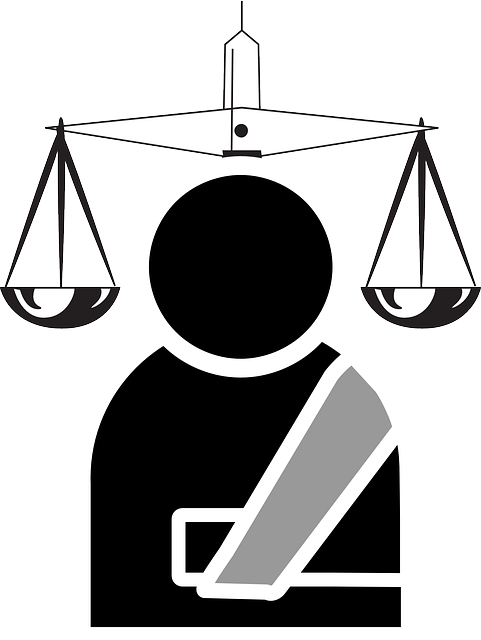A PTSD injury claim is a legal process for individuals seeking compensation for trauma-related personal injuries and mental health damages, proven by a qualified healthcare professional. Key strategies involve showing a direct connection between traumatic events and psychological injuries, using medical records and expert testimony, focusing on liability, and gathering compelling evidence. The initial step is to compile detailed medical records and evidence linking PTSD to the incident, then consult a specialized lawyer who will demystify the legal framework, develop a robust case strategy, and ultimately secure compensation for PTSD-related struggles.
“In the realm of personal injury law, Post-Traumatic Stress Disorder (PTSD) claims present unique challenges. This article guides you through the intricate process of pursuing a PTSD injury claim, offering valuable insights for those seeking justice and compensation. We’ll explore the definition and eligibility criteria, uncovering common legal strategies employed by experts to strengthen cases. Additionally, we’ll provide a step-by-step navigation system, ensuring you’re prepared to file a successful PTSD injury claim.”
- Understanding PTSD Injury Claims: Definition and Eligibility Criteria
- Common Legal Strategies Employed in PTSD Cases
- Navigating the Process: Steps to File a Successful PTSD Injury Claim
Understanding PTSD Injury Claims: Definition and Eligibility Criteria

A PTSD (Post-Traumatic Stress Disorder) injury claim is a legal process where individuals seek compensation for personal injuries and mental health damages resulting from traumatic events. This type of claim recognizes that the psychological impact of trauma can be severe, often leading to long-term disabilities and significant lifestyle changes. To be eligible for a PTSD injury claim, one must have experienced or witnessed a traumatic event, such as military combat, accidents, natural disasters, or violent crimes, and subsequently developed PTSD symptoms.
The criteria for eligibility typically include a diagnosis of PTSD by a qualified healthcare professional, evidence of the traumatic event, and proof that the mental health disorder is a direct result of the trauma. Unlike other personal injury claims focusing on physical injuries, PTSD cases emphasize the psychological impact, which can be challenging to diagnose and quantify. Thus, individuals considering a PTSD injury claim often require the assistance of specialized professionals and a competent personal injury lawyer to navigate the legal process and secure the compensation they deserve, especially in complex scenarios like nursing home neglect or partnership disagreements.
Common Legal Strategies Employed in PTSD Cases

In PTSD injury claim cases, legal strategies often center around establishing a clear connection between the traumatic event and the subsequent psychological injuries. One common approach is to leverage medical records and expert testimony from psychologists or psychiatrists who can attest to the direct correlation between the incident and the development of Post-Traumatic Stress Disorder (PTSD). This involves meticulous documentation and a thorough understanding of diagnostic criteria, ensuring that the claim aligns with recognized psychiatric standards.
Another prevalent strategy is to focus on liability, particularly in cases involving slip and fall accidents or other traumatic incidents. Legal professionals may argue that the responsible party had foreseen the potential for harm and failed to take preventive measures, thus establishing negligence. This approach has proven effective in securing substantial accident settlements, especially when commercial disputes arise from similar circumstances. The key lies in thorough investigation, gathering compelling evidence, and presenting a compelling narrative that highlights the severity of PTSD and its impact on the claimant’s life.
Navigating the Process: Steps to File a Successful PTSD Injury Claim

Navigating the legal process to file a successful PTSD injury claim can seem daunting, but with careful planning and expertise, it becomes manageable. The first step involves gathering comprehensive medical records detailing the diagnosis and treatment for PTSD, along with any evidence linking the injury to the incident in question—be it a defective product or a truck accident. This documentation is crucial as it forms the backbone of your claim.
Next, consult an experienced lawyer specializing in PTSD injury claims. They will guide you through the legal framework, helping you understand the applicable laws and regulations. Together, you’ll craft a solid case strategy. This may include investigating witness statements, gathering expert opinions, and constructing a compelling narrative that highlights the impact of the injury on your life. With the right approach, individuals can secure the compensation they deserve for their PTSD-related suffering.
In navigating the complex landscape of PTSD injury claims, understanding both the unique challenges and proven legal strategies is paramount. By grasping the definition and eligibility criteria, employing effective legal tactics, and adhering to the structured process for filing a claim, individuals affected by PTSD can enhance their chances of securing the compensation they deserve. These strategies serve as a powerful tool in advocating for those who have endured trauma-induced conditions, ensuring their voices are heard and their rights protected.






